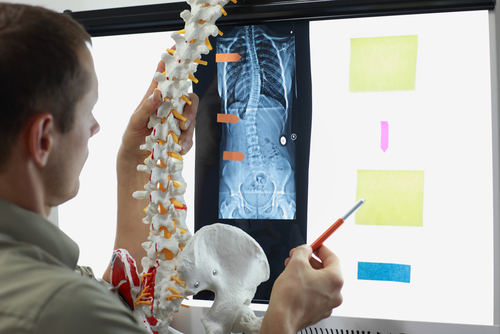Electrical Stimulation May Have Potential to Manage Scoliosis in CP Kids, Study Suggests

Results of a pilot study suggest that the use of external electrical stimuli may help reduce scoliosis and manage its impact in children with severe cerebral palsy. This may represent a new therapeutic option for those who cannot be treated through surgical procedures, which are considered the only effective option to treat these spine deformities.
The study was conducted at the Department of Rehabilitation Medicine at Asan Medical Center, University of Ulsan College of Medicine in Seoul, South Korea, and its findings were reported in the journal Disability and Rehabilitation, in an article titled “Effects of lateral electrical surface stimulation on scoliosis in children with severe cerebral palsy: a pilot study.”
The study enrolled 11 children with severe cerebral palsy, ages 3 to 15, who presented stationary or progressive scoliosis even after several interventions to manage the spinal deformity, such as physical therapy, spinal bracing, and seating modifications.
All participants were unable to undergo surgical correction of the spine.
The children underwent two sessions per day of lateral electrical surface stimulation for three months, at home. Each session was one hour long and consisted of electrical pulses (40-80mA of intensity, 200 ls of pulse width, 25 Hz of frequency) for six seconds, followed by six seconds off.
The electrical stimuli were given on the convex side of the trunk curvature.
The researchers found that after one month of electrical stimulus treatment, the children presented a significant improvement of the curvature angle, with 45% experiencing an improvement of 5 degrees or more.
This positive effect was even more significant by the end of the three-month period of the study, with 64% of the children achieving a 5 degree or more improvement compared with baseline.
The intensity of the treatment was found to be positively associated with improvements in a sitting position. The team also found that longer treatment sessions could potentially improve the effectiveness of the treatment.
No significant changes were reported in terms of trunk control or other measures of position correction, including the angle of the lower spine and the upper part of the spine.
After the completion of the treatment, the children’s caregivers were questioned about their perception on the child improvements. They reported improvements in head control, trunk power, sitting duration, scoliosis appearance, and upper spine deformity appearance, all of which they credited as beneficial effects of the external electrical surface stimulation therapy.
A few minor adverse effects were reported, none of which required medical assistance. Four children experienced skin irritation and pain or fatigue during or after the sessions. During the study period, no reports of disease progression, aggravation of seizures, or muscle contraction were reported.
The researchers believe the results show the treatment “is effective in scoliosis in children with severe CP [cerebral palsy] and it may improve trunk balance,” demonstrating that electrical stimulus treatment “may be another option of managing stationary or progressive scoliosis in the children with severe CP who are unable to undergo surgery.”
Still, additional studies addressing the safety and efficacy of lateral electrical surface stimulation in a larger group of CP patients are required.


